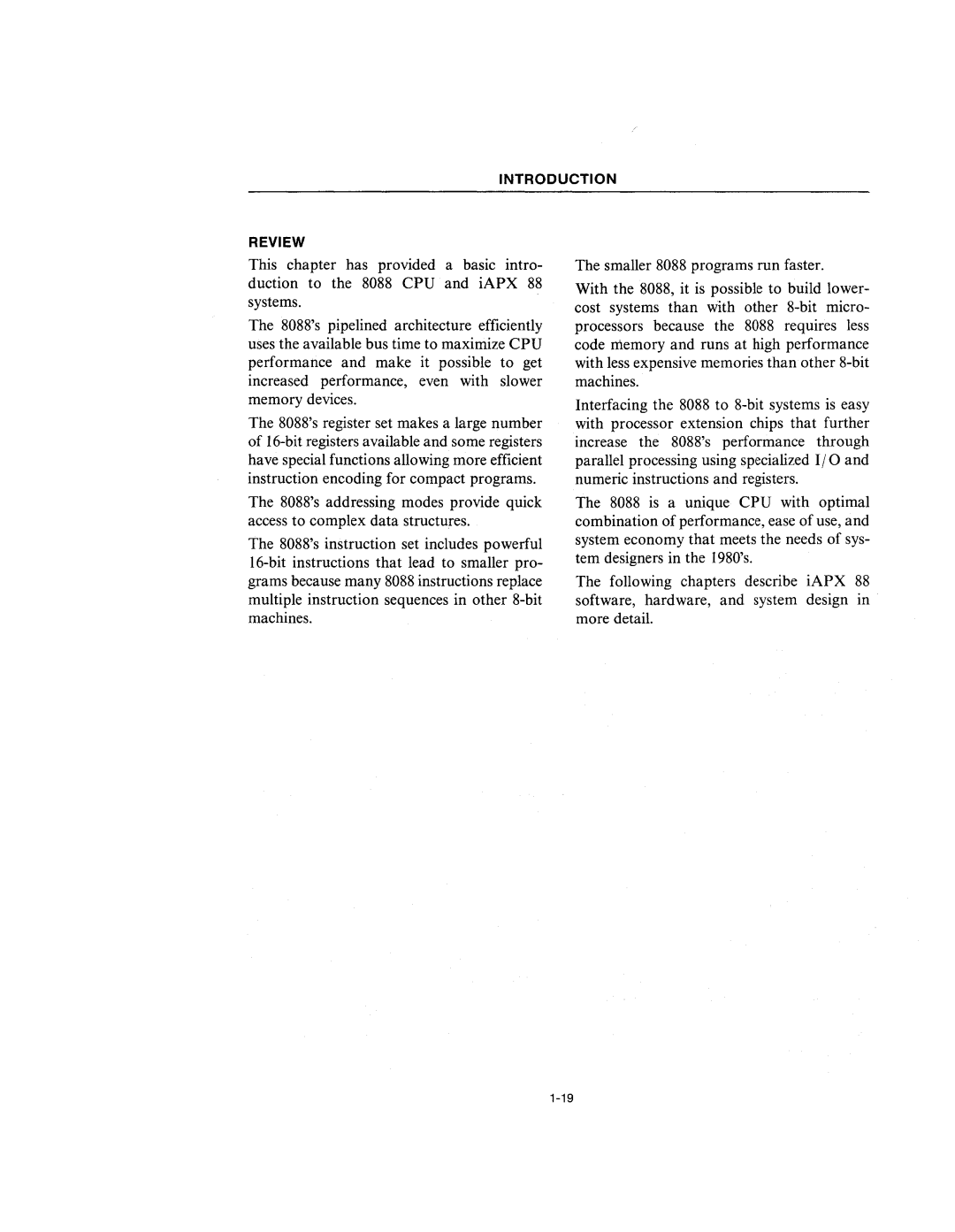
INTRODUCTION
REVIEW
This chapter has provided a basic intro- duction to the 8088 CPU and iAPX 88 systems.
The 8088's pipelined architecture efficiently uses the available bus time to maximize CPU performance and make it possible to get increased performance, even with slower memory devices.
The 8088's register set makes a large number of
The 8088's addressing modes provide quick access to complex data structures.
The 8088's instruction set includes powerful
The smaller 8088 programs run faster.
With the 8088, it is possible to build lower- cost systems than with other
Interfacing the 8088 to
The 8088 is a unique CPU with optimal combination of performance, ease of use, and system economy that meets the needs of sys- tem designers in the 1980's.
The following chapters describe iAPX 88 software, hardware, and system design in more detail.
